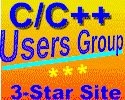| 1 Sep 1999 | Hamming window option for raised-cosine filters |
| 22 Oct 1999 | Bug fix: DC gain of raised-cosine filters now reported correctly (was always given as 1.0) |
| 22 Oct 1999 | Support for fixed-point coefficients in raised-cosine filters and Hilbert transformers |
 If you've come here by mistake and are looking for an analogue (LC) filter designer,
look here instead.
If you've come here by mistake and are looking for an analogue (LC) filter designer,
look here instead. A companion page designs digital (i.e. software) phase-locked loops (PLLs).
If you like this page and are interested in analogue electronics, you might also like my
educational circuit simulator.
http://www-users.cs.york.ac.uk/~fisher/mkfilter
(you may add a trailing slash if you wish). If you've arrived here through any other URL, please update your links or bookmarks now! In particular, the host Dcpu1 will not be alive for much longer. Thank you.
This is an interactive filter design package, for designing digital filters. Fill in the form and press the ``Submit'' button, and a filter will be designed for you. You can specify the following types of filter:
The ``C'' code generated by this package is the way it is for pedagogic reasons, and could easily be ``tightened up''.
The source code (in C++) for the programs that do the work (i.e. not the WWW front end) is available for browsing or down-loading, and PostScript documentation for these programs is available. If your browser uses GhostView to display PostScript, select ``magstep -1'' and ``paper A4'' for best effect.
The graphs are produced with the help of the excellent gd GIF manipulation library, originally from Quest Protein Database Center.
Here are some references to textbooks which will tell you about digital filters, the differences between the various types, the bilinear transform method, etc.
A companion page generates digital (i.e. software) phase-locked loops (PLLs).
An email message, saying what you like and don't like about this package, will be appreciated.